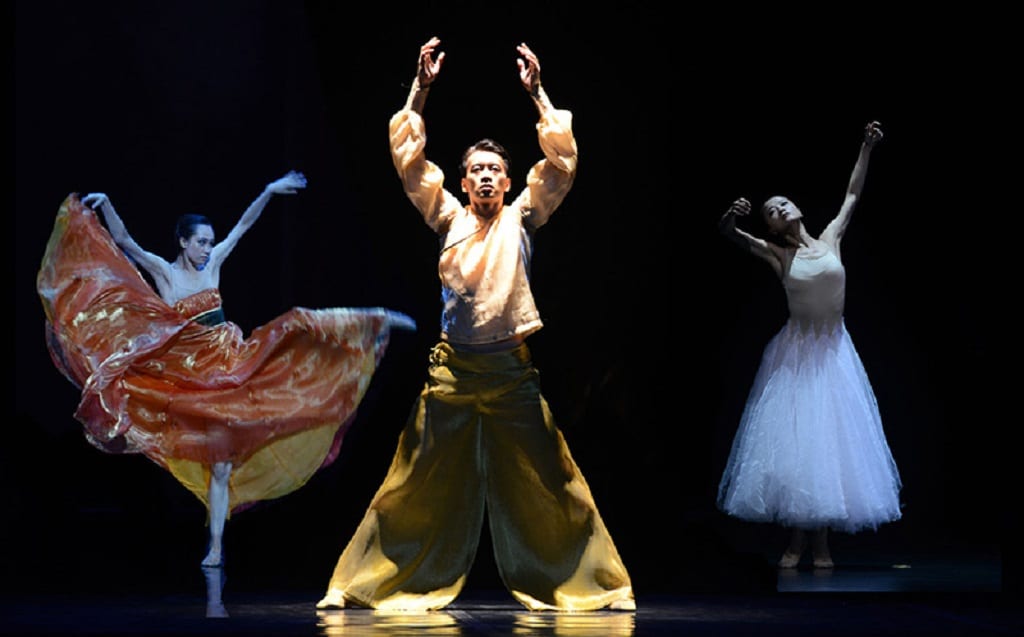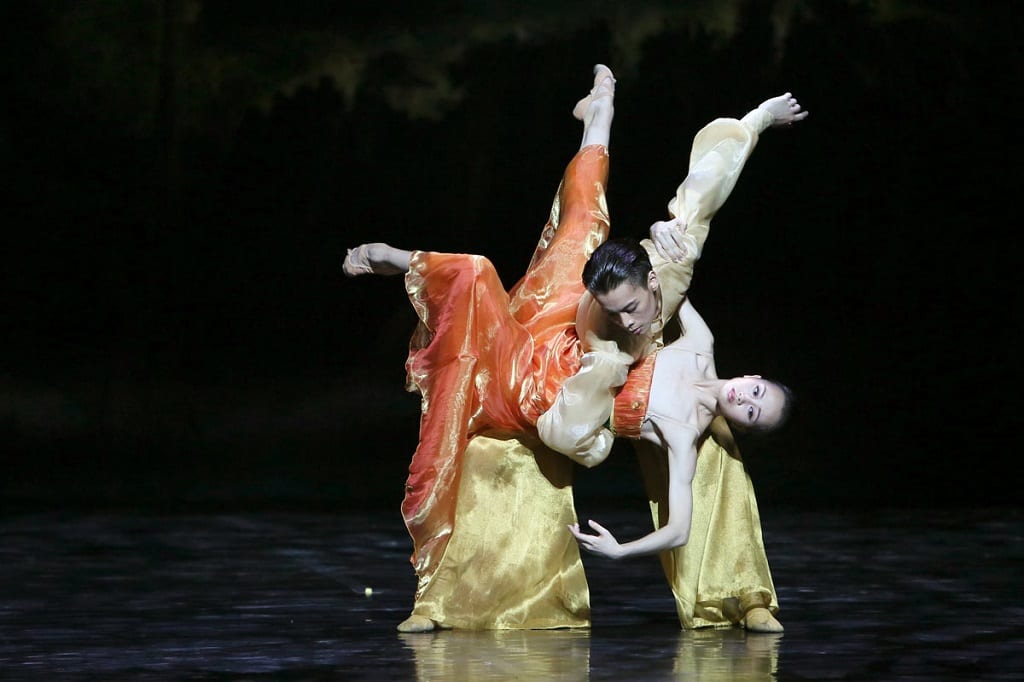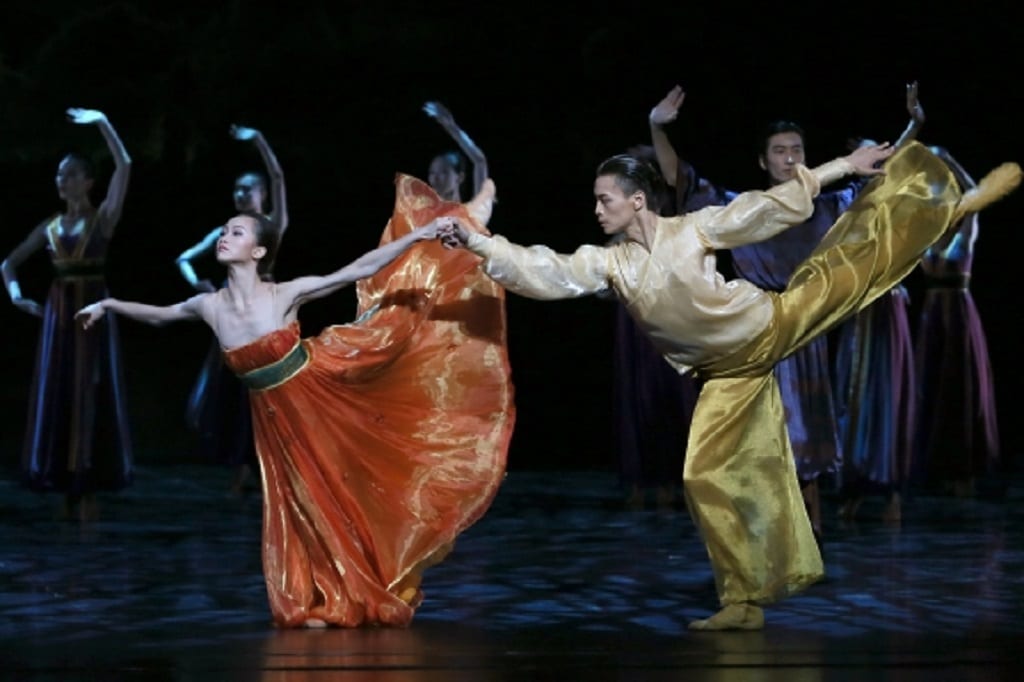Tragic love stories are a well trodden path in dance, they are adored by audiences for their abilities to make unbearable sadness somehow beautiful and poignant, however Shanghai Ballet’s doomed love affair, Echoes of Eternity is mostly melancholic indulgence and set against a dingy backdrop that fails to lift this depressing tale. Tragedy aside, the well-honed cast are hardworking storytellers who possess a delicate, ethereal quality to their dance that compensates for this sombre narrative.
Echoes of Eternity is a highly significant tale in Chinese history, dating back to the 8th century. It tells the story of the all-powerful Emperor Ming (Wu Husheng) and his chosen lover and companion, Lady Yang (Qi Bingxue). Qi is close to perfect in fulfilling the role of a fragile but loyal partner. She is only nineteen years old and brings an authentic innocence, all wide eyed and elegant in an opulent floor length gold gown, even in death there is no sign of distress, simply calm composure as Ming endures torment.
Wu is full of the appropriate swagger and scorn as the Emperor, although the highly choreographed fight scenes portray him as a little precious at times. However, the pair work together beautifully in the Act One pas de deux, Qi using all of her delicate vulnerability with some stunning arabesques and Wu as her tower of strength. The choreography suits the couple’s greatest assets and whether intentional or not it is packed with picture perfect poses make this piece understandably crowd pleasing.
Zhao Hanbing displays the most classical technique as the Moon Fairy in this contemporary ballet. She possess the very slightest of statures but the lines created by her fluid arms are flawless, making for a very believable fairy. In a role that leaves much to the interpretation of the artist, Zhao is mysterious and intriguing. Her sporadic appearances usually signal forthcoming disharmony and distress to the protagonists, leaving her main purpose to serve as a haunting emblem of death.
The faults here are not the protagonists but the achingly slow storytelling; in essence this is a tale of love and loss, and some subsequent mopping, however there are a number of confusing and over extended fight scenes that don’t have the necessary clarity or add positively to the narrative. (They seem to be there to give the ensemble a more substantial function.) Perhaps the multi-national creative team made up of Chinese dancers, a German choreographer, Indonesian set designer and French costumer design make for a cultural hotch-potch that although successful in part does not quite do this iconic piece of Chinese history justice, as visually beautiful as it is.



